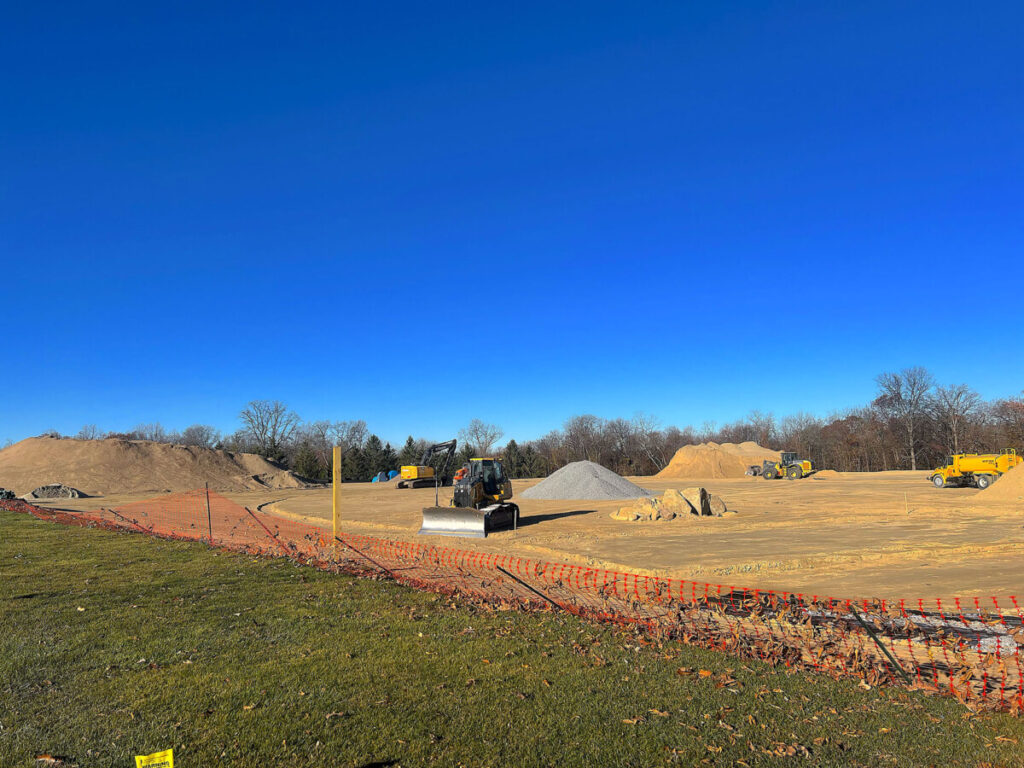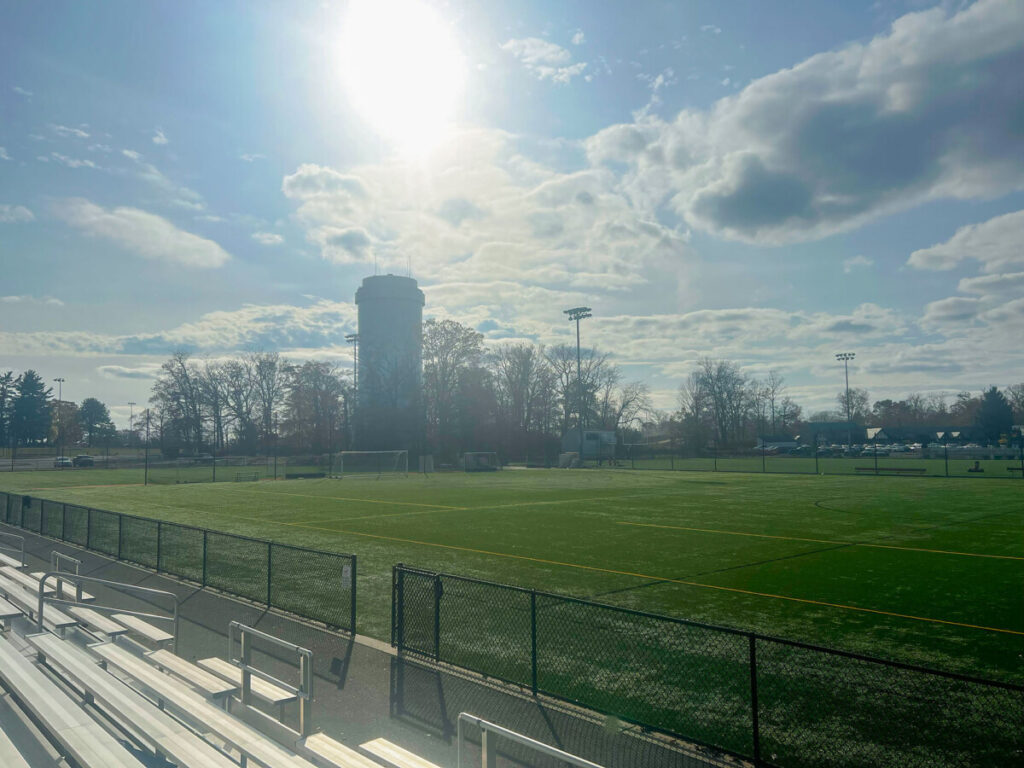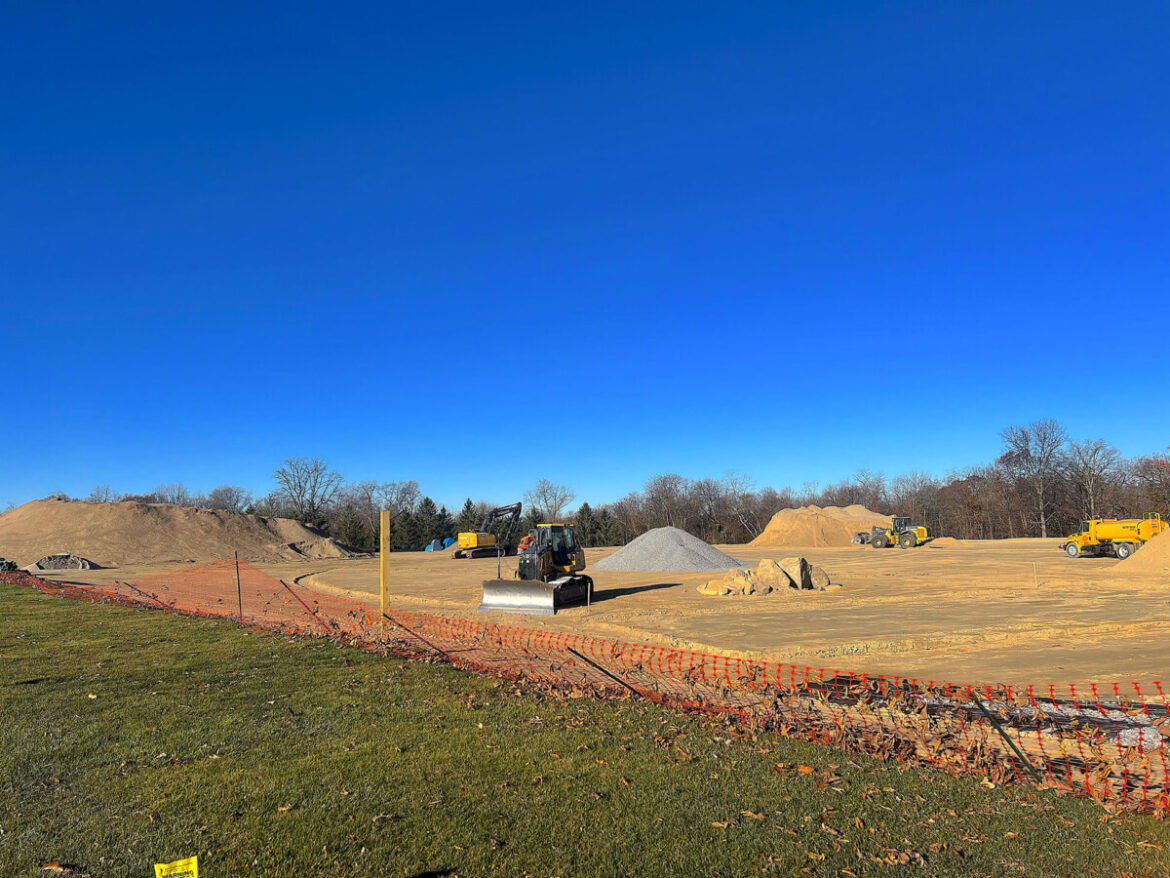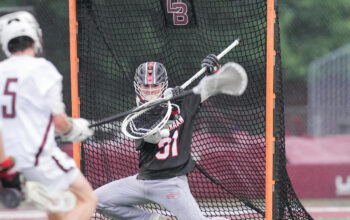Danielle O’Malley, Editor-in-Chief
@domalley_
Athletics at the high school level are highly valued, and the town of New Canaan does their best to provide the necessary tools for their students. From skilled athletic trainers to a workout facility on campus and everything in between, Rams athletes have countless provisions at their fingertips. It’s about to get even more special with the addition of Coppo Field, a new baseball stadium being built on campus.
For many years, the baseball teams have had to lug their gear and players across town to play at Mead Park. Given that the majority of the other sports teams at the high school reap the benefits of having their practice field on campus, this was both frustrating and inconvenient for the boys. The addition of Coppo Field will eliminate this difficulty and contribute to what is already offered at the high school. “In my opinion, it completes the facilities that we have here, which are really some of the best high school facilities that you could ask for,” Athletic Director Jay Egan said. “We have a track that doesn’t have a turf field in it, so it’s a separate track facility. We have a stadium. We have two and a half turf practice fields, and now you have the baseball field on campus so they can walk to practice and I think it’ll do a lot for people coming to watch the game as well.”

Despite the accomplishment, it was not easy to get to this point. It took years of fundraising and approvals to begin breaking ground. “The New Canaan Athletic Foundation really deserves all the credit for pushing the project forward. These things, when they go through town, have to go to different boards and have to get different approvals, and in this case, there is some town funding,” Mr. Egan said. “Mike Benevento, president of the New Canaan Athletic Foundation, was the person who spearheaded this whole effort.”
Unlike the field at Mead Park, Coppo Field will be made out of turf, ensuring the weather won’t be as big of a factor when it comes to the team playing. “The fact that it’s turf is just a whole other thing. It opens up much more opportunity to play and practice on the field in the spring. A spring sport is always going to be determined by the weather, and with the field at Mead sometimes we wouldn’t be able to practice,” Mr. Egan said.
Even though the baseball team gets to be free of the weather problem, many fall sport athletes don’t. Despite the variety of turf fields available on campus, there still isn’t enough space for all the teams to consistently play there. Furthermore, a lot of time and effort goes into planning the fall sports schedule to make sure the teams not only have a time slot to play, but a place to play as well.
Senior captain of the boys soccer team, Brooks Wunderlich, has played soccer all four years he’s been at the high school. Even though he was on varsity for three of those years, he still did not practice on turf frequently despite playing all games on turf. “On JV, we strictly practiced at Saxe every day after school. Varsity it’s varied a little more. It’s usually been Saxe in my career, but sophomore year and a little bit this year, we got turf every now and again,” Brooks said.

Senior captain and goalie of the girls soccer team, Chrysi Gabriel, has faced a similar situation; practicing on the Saxe Middle School fields the majority of the time, sometimes playing on Water Tower One and playing all games on turf. “Girls and boys soccer typically have the Saxe fields, which have patches of dirt and a lot of geese poop. It’s not the best to play on,” she said.
The quality of the Saxe fields is a well known problem and raises concerns in many of the players. “I actually had a small sprain because of the grass fields last year. It’s a major struggle, because all the soccer teams have to play there, including during preseason and tryouts,” Chrysi said.
Brooks shared a similar sentiment. “I wouldn’t say grass fields are always harmful, but it’s bad for your knees and ankles to play on. Turf could be better, like in any sport, there’s danger concerns, with the field that you’re playing on,” he said. “But I would say it’s a lot worse on the grass. I’m not worried about playing on it, but it doesn’t feel great.”
With numerous athletes constantly using the Saxe fields throughout the season, maintaining them gets difficult and the quality tends to decline. “You’re running on it every day, it’s just hard dirt and the grass is vanishing,” Brooks said.
On the contrary, turf fields don’t require that kind of upkeep and are able to withstand tough conditions. Sophomore football player Henry Reagan said, “Turf is definitely a lot nicer. There’s never a time where it’s in worse condition.”
Given the girls and boys varsity soccer teams play their games on turf fields, it’s important they still get practice on turf. To do this, Mr. Egan and the fields committee try to optimize when other teams have games in order to schedule the fields differently. “Say field hockey travels and they’re away, or the girls team is away and playing, then the boys team has a field for an hour and some time, and then maybe, say, they have to share half of the field with freshman football,” Mr. Egan said.
However, when the varsity sports teams have a home game, scheduling gets even more complicated. Chris Silvestri, defensive coordinator of the football team, explained how they have to practice on the Water Tower fields twice a week, and the field they practice on does not have lines. “The only drawback is routine. I think when you have an unlined field, it’s tough to organize a practice. So if the field isn’t lined with boundaries, lines, etcetera, it’s tough to teach the game,” he said. “A lot of our stuff is based on some of our alignments and how we align for football is based on markers on the field.”
Henry even suggested moving football to the grass fields every once in a while. “Thursdays, maybe varsity can go up to grass, because all we do is walk through that day. And those days, if soccer or other sports needed to do a full practice, they could get Dunning or Water Towers,” he said.
Another factor in this equation is youth sports; they practice right when high school sports end, making it even more difficult to ensure teams get equal turf time. “High school fields have been available to the high school teams up to 5:30 and then after 5:30 they’ve been available for the youth,” Mr. Egan said. “We feel like we have a responsibility to both of those groups, because they’re all New Canaan residents, so we do the best we can within that time frame, as far as allocating practices are concerned.”
Given the complicated schedules and crowded fields when multiple teams practice there, many athletes feel there is only one option: building a new turf field. “I think that one solution could be that we change one of the Saxe fields into turf, or maybe a couple of those fields into turf. Obviously that would be very expensive and challenging to do, but that could be an option,” Chrysi said.
Coach Silvestri is also in support of a new turf field, however some concerns are raised for him. “It’s always nice to get turf fields because it can be used year round, and it increases participation. If you have astrograss, you can play, practice or prepare. That’s always been something that turf fields have given light to,” he said. “I’m all for another turf field. I just don’t know where we’re gonna get money for it.”
Mr. Egan estimated a new turf field would be around three and a half to four million dollars to build. “Even in towns like New Canaan, it’s not that easy to just come up with that number. The town of New Canaan is putting in a little less than 50% of the cost of our projects,” he said. “These things happen over time, and I think there’s never going to be, no matter how many turf fields we have, there will never be enough turf fields for people that want to use them.”
Additionally, the field would need to be lit as it would be used going into late fall, which is harder than it sounds. “You don’t get to bang for your buck building a turf field if it can’t be lit. The thing about turf fields is they can be used into the late fall and they can be used in the early spring, but if they’re not lit, you don’t have the sunlight, you’re missing multiple hours every day of access to that field. You would never be able to put a field at Saxe that is lit because of its proximity to the neighbors; that would not be something you would ever be able to get permission to do,” he said. “That’s why there’s no lights on the track field, and that’s why there’s no turf in the track field because of its proximity to Waveny Care Center. That’s why the fields that are lit here are not anywhere near anyone’s home or any residential property.”
Hence, the battle for turf fields remains and complex scheduling and practicing at Saxe fields will persist. Though athletes will continue to fight for more equality on the turf fields. “It could absolutely be handled better for the varsity programs to get priority,” Brooks said.




